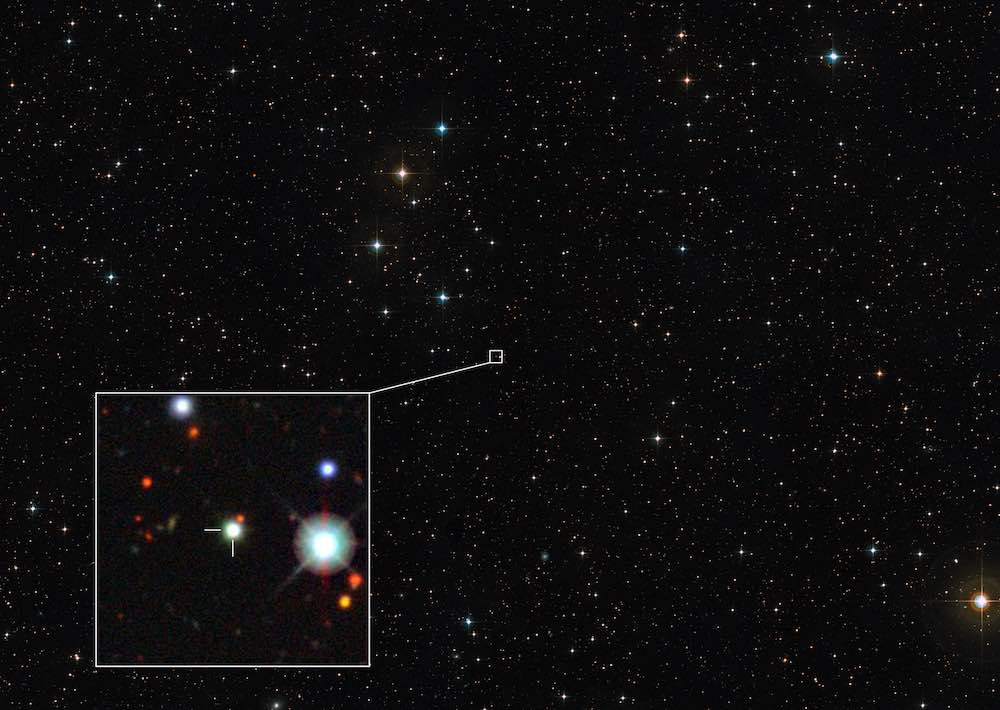
Quasars are the bright cores of distant galaxies powered by supermassive black holes, and 12 billion light years away, one has been found that is shining brighter than 500 trillion suns.
Growing in mass by the equivalent of one Sun per day, it’s the fastest-growing black hole to date, but at 12 billion light years away, it probably burnt out long ago. The light detected today is merely the echo of its existence.
Using the European Southern Observatory’s (ESO) Very Large Telescope (VLT), astronomers have characterised the quasar, called J0529-4351, which was first seen in 1980.
“We have discovered the fastest-growing black hole known to date. It has a mass of 17 billion Suns, and eats just over a Sun per day. This makes it the most luminous object in the known Universe,” says Christian Wolf, an astronomer at the Australian National University (ANU) and lead author of the study published in Nature Astronomy.
The black holes powering quasars collect matter from their surroundings in a process so energetic that it emits vast amounts of light. So much so that quasars are some of the brightest objects in our sky, meaning even distant ones are visible from Earth. As a general rule, the most luminous quasars indicate the fastest-growing supermassive black holes.
The matter being pulled in toward this black hole, in the form of a disc, emits so much energy that J0529-4351 is over 500 trillion times more luminous than the Sun.

“All this light comes from a hot accretion disc that measures seven light-years in diameter — this must be the largest accretion disc in the Universe,” says ANU PhD student and co-author Samuel Lai.
Researchers say that remarkably, this record-breaking quasar was hiding in plain sight.
MORE STORIES LIKE THIS: Astronomers Detect Oldest Black Hole Ever Observed Dating ‘From the Dawn of the Universe’
“It is a surprise that it has remained unknown until today, when we already know about a million less impressive quasars. It has literally been staring us in the face until now,” says co-author Christopher Onken, an astronomer at ANU. He added that this object showed up in images from the ESO Schmidt Southern Sky Survey dating back to 1980, but it was not recognised as a quasar until decades later.
Finding quasars requires precise observational data from large areas of the sky. The resulting datasets are so large, researchers often use machine-learning models to analyse them and tell quasars apart from other celestial objects.
OTHER BRIGHT PHENOMENON: Unprecedented Gamma-Ray Burst is ‘The BOAT’ – Brightest of All Time in Human History
However, these models are trained on existing data, which limits the potential candidates to objects similar to those already known. If a new quasar is more luminous than any other previously observed, the program might reject it and classify it instead as a star not too distant from Earth.
Finding and studying distant supermassive black holes could shed light on some of the mysteries of the early Universe, including how they and their host galaxies formed and evolved.
SHINE The Light Of This Incredible Discovery With Your Friends…




















